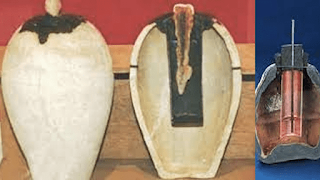Discover Amazing Ancient Innovations: Tales of Time-Critical Inventions
Introduction:
Welcome to the amazing world of
ancient innovations, which advanced technological frontiers centuries before
their time. Did you realize that in Baghdad, 2000 years ago, amazing
developments had already begun? We examine these ground-breaking discoveries
and their implications for our understanding of antiquity in this article.
Baghdad's Ancient Batteries:
The Mysterious Damascus Blades:
The Mysterious Roman Glass:
During the Roman Empire, a craftsman sent Emperor Tiberius a piece of glass that was flexible but would not shatter.
Tiberius was curious and inquired whether there were any other such items, but the craftsman replied that there weren't any. The emperor had the artisan put to death because he thought the invention would lower the value of gold and lead to an economic downturn. This story, which is recounted in various recent literature, raises concerns concerning the presence of an unidentified glass type.
Sustainable Roman Concrete:
Roman structures like the
Colosseum and aqueducts lasted for more than 2,000 years because of sustainable
Roman concrete. The Romans' unique concrete was their trade secret. It was
created by combining lime and the volcanic rock pozzolan, then submerging the
mixture in seawater to start a chemical reaction. This durable, eco-friendly
concrete resists war, hurricanes, and earthquakes.
Amazing Ancient Machines:
The First Ancient Computer:
Seismometers in Antiquity:
The first seismometer was made in
Ancient China 1,900 years ago. By alerting emergency personnel in a timely
manner, this sensitive equipment was able to detect seismic motions and predict
earthquakes, saving lives.
Conclusion:
These innovative technologies
from antiquity are evidence that the historical period was far from archaic.
These findings are astounding and fascinating, ranging from electric batteries
and steam engines to strong concrete and antiquated computers. Who knows what
other ancient wonders are still out there just waiting to be found?
See also:








